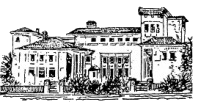In the province, the population was recorded in a form called ”Letter A”. All of the individuals were required for enumeration, regardless of sex, age and other criteria; and they had to be grouped by the houses they dwelled in. The information filled in the form was quite diverse, ranging from personal aspects (name, age, relation to other coresidents, ethnicity, disabilities), to social-administrative (occupation, fiscal category, residential status) and economic issues (agricultural wealth).
Specimen form sent in the districts by the Department of Interior.

The form contained 24 columns:
1. ”Nr.”– No.: the house number given with that occasion (it did not replicate established addresses);
2. ”Numele” – Name: here the census taker wrote the name of each person, but also various appellatives, as well as the relation to other coresidents (status inside the household);
3. ”Neamul” – Ethnicity;
4. ”Căsătoria” – Marital status;
5. ”Vârsta” - Age;
6. ”Bir” – Tax (fiscal category);
7. ”Clacă” – Property – the general status from the point of view of land ownership: landed or landless householder. In the towns this column was filled following the tenant / landlord differentiation;
8. ”Meşteşugul” – Occupation.
9. ”Pogoane lucrate” – Used land: the land surface used by each person, by types of usage (pastures were excluded);
10. ”Beteşug” – Disability;
11-24. ”Cai”, ”Boi”, ”Vaci”, ”Oi”, ”Capre”, ”Râmători”, ”Bivoli”, ”Măgari”, ”Catâri”, ”Stupi”, ”Pruni”, ”Duzi”, ”Vie”, ”Pometuri” - Horses, Oxen, Cows, Sheep, Goats, Pigs, Buffalo, Donkeys, Mules, Bee hives, Mulberry trees, Vineyard, Plum trees, other trees.

The resulting material was kept by the authority who compiled it (police and sub-prefectures), while two sets of copies were passed upwards along the chain of command. One copy was sent to the prefecture, and one to the Department of Interior. The vast majority of what survived until this day represents the sets of copies sent to Bucharest, covering most of the circumscriptions. The documents are preserved at the National Archives of Romania (SANIC), with two exceptions: the local archives of Teleorman and Ialomiţa.
The forms are bound into books (or registers), one or two volumes for each circumscription (for each subprefecture of town with police office), with several exceptions from this general rule.
To better understand the situation of the preserved material, we created the following map, showing each circumscription (urban or rural), the state of preservation of its forms, and the archival references.
The representation of the administrative borders is approximate and applies for the end of 1837. It was reproduced from the 1833 Bergenheim-Galitzin map, with some corrections.
The digitization of forms type A.


